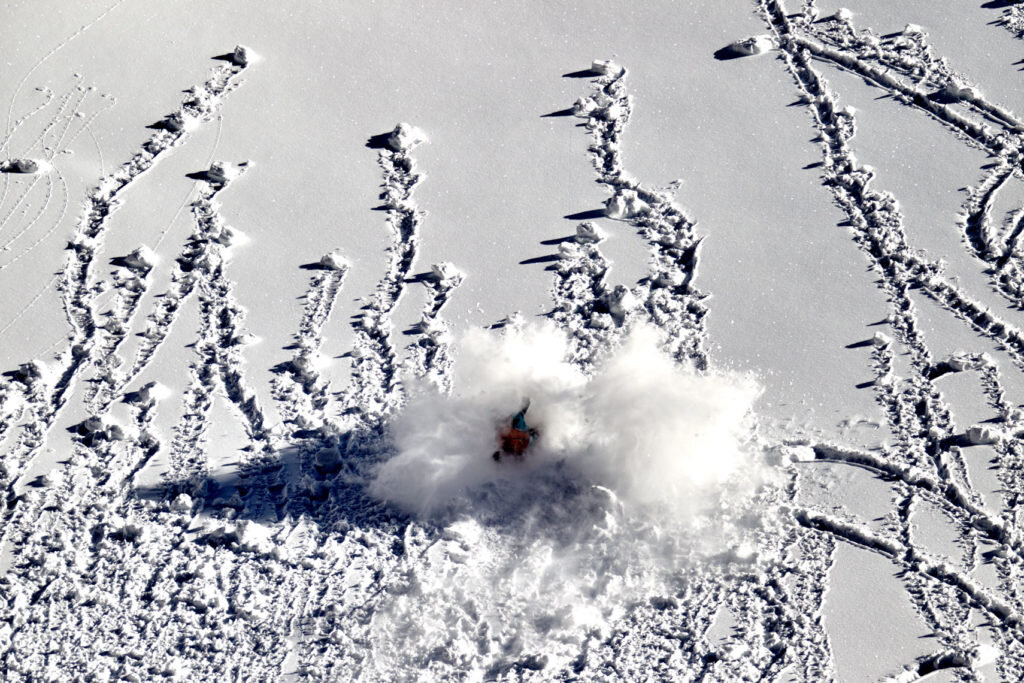 Whilst documenting the Freeride World Tour in Andorra last week, I couldn’t help but notice the abstract patterns caused by the roller balls of snow. From every angle snowballs had cascaded their way down the face, coming to rest when their momentum fizzled out. I took a bit of time during each helicopter reposition to capture some of these cool looking formations.
Whilst documenting the Freeride World Tour in Andorra last week, I couldn’t help but notice the abstract patterns caused by the roller balls of snow. From every angle snowballs had cascaded their way down the face, coming to rest when their momentum fizzled out. I took a bit of time during each helicopter reposition to capture some of these cool looking formations.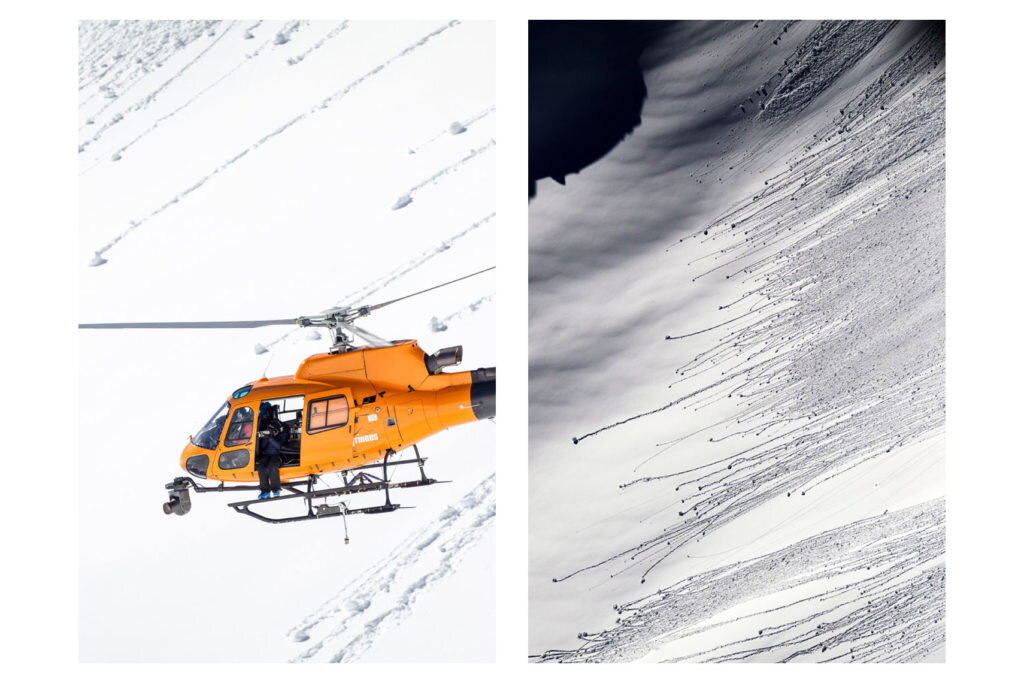
Heli Time
The art of capturing content from a helicopter with its door open proves to be a rather exhilarating process. The helicopter serves two purposes during the event: transmitting live video coverage of the athletes from the HD Cineflex, whilst allowing a photographer to take advantage of the empty back seats, shooting directly out of the door. A couple of slings attached to your climbing harness strap you in place, and you’re good to go. Perspectives shift with every press of the cameras shutter, (as you can see in GIF below) with the helicopter tracking each athlete as they make their way down the competition face.
Roller Balls In The Snow
As soon as each skier or snowboarder made it to the finish area, the helicopter would reposition itself at the top of the mountain face, giving me time to capture these roller balls without the human element. I find myself becoming more and more attracted to landscapes without the human form in them, with my body of personal work always looking out for abstract patterns and unique angles. I’ve put together a selection of them for you here.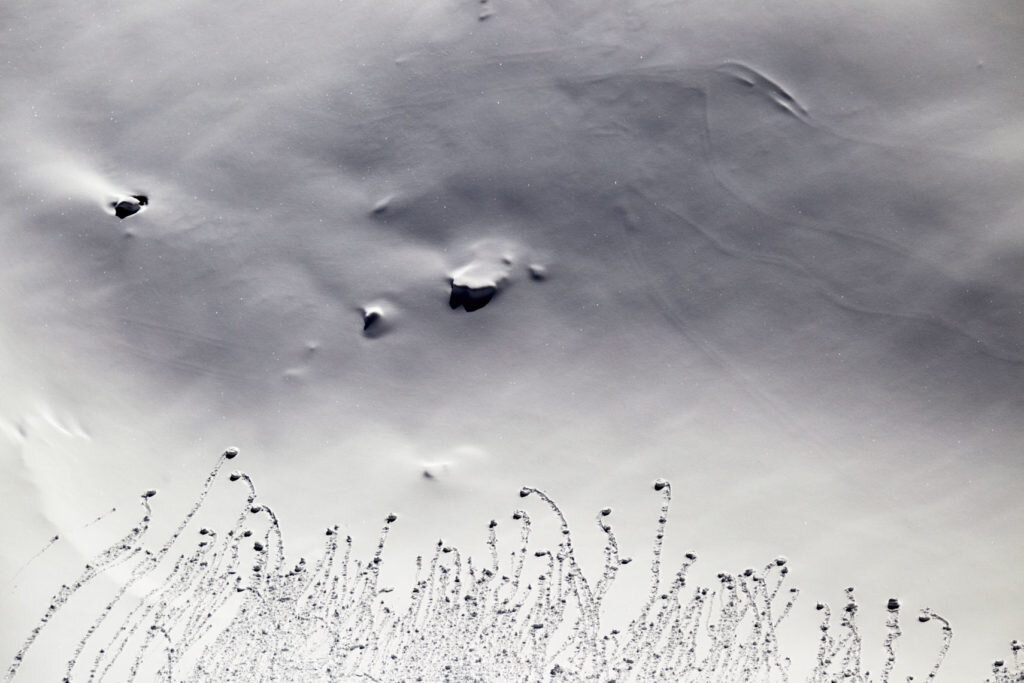


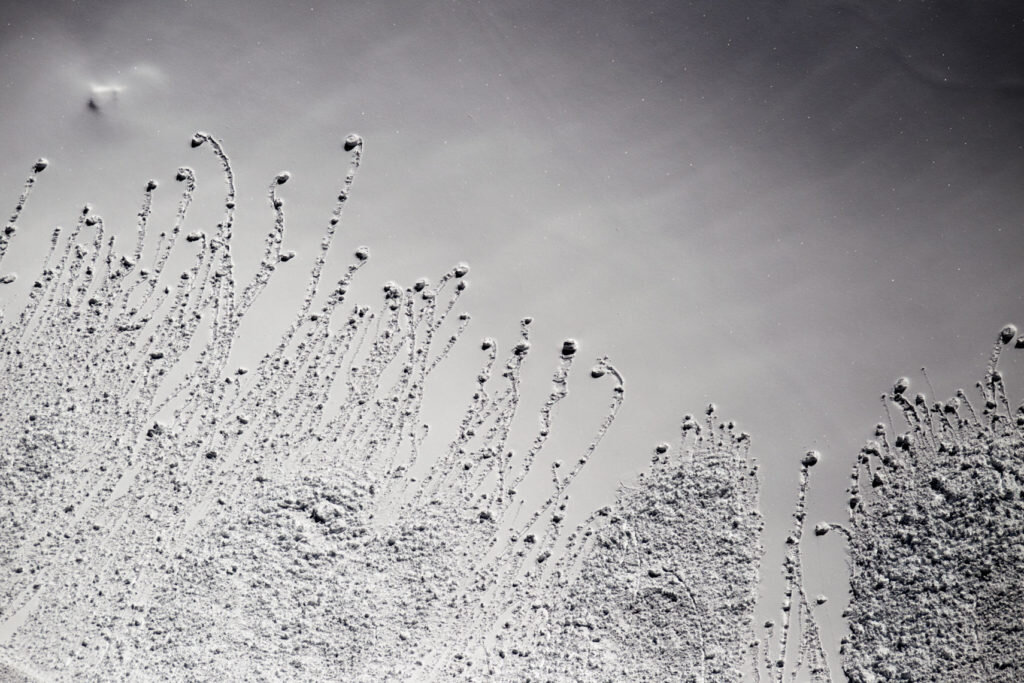


Adding Some Action
Of course, the whole reason to be up there was to capture the action of the Tour. Generally the athletes were missing out on these areas until snowboarder Shannan Yates found the perfect line through. Fluid action through the abstract roller balls easily made for my image of the day.
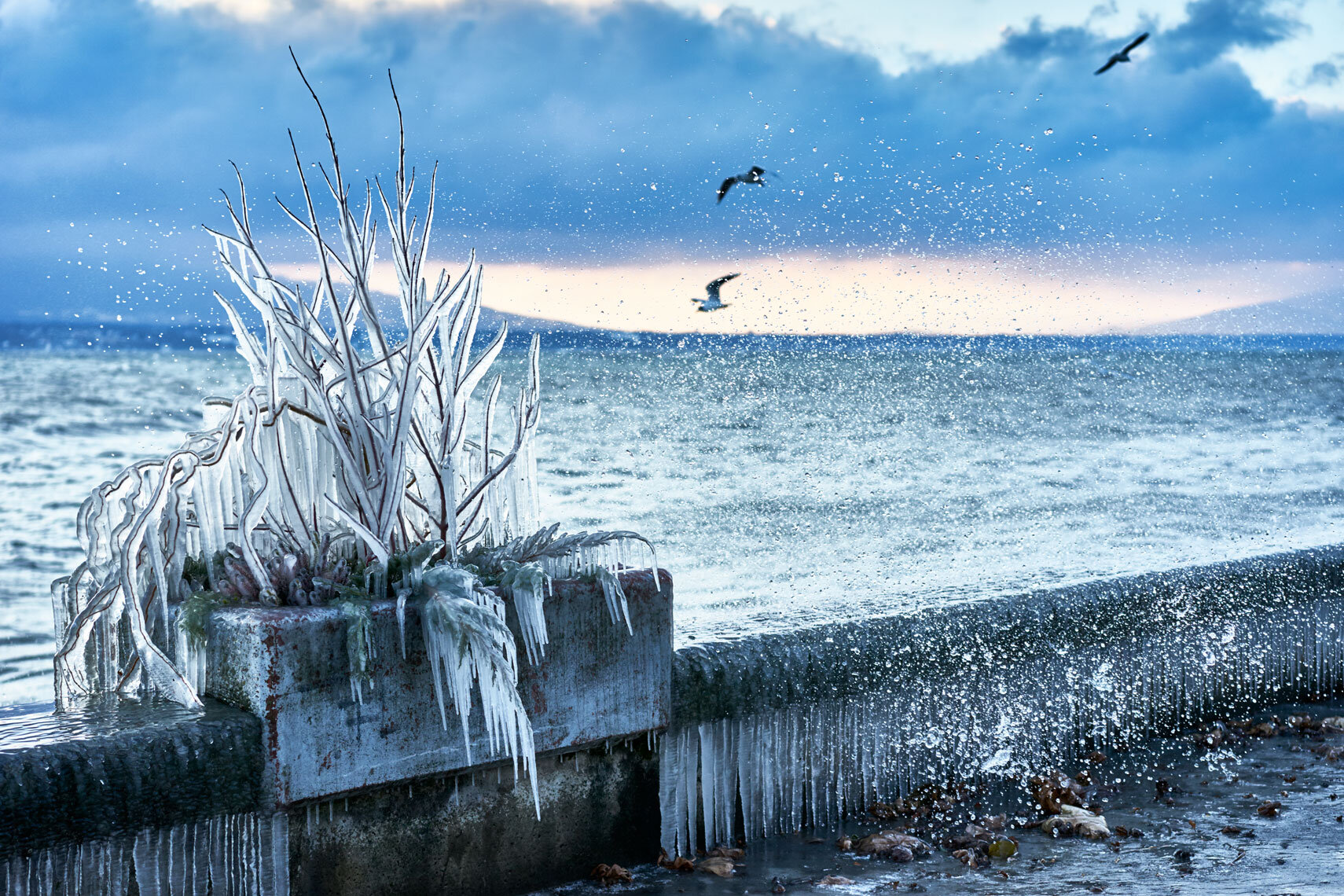

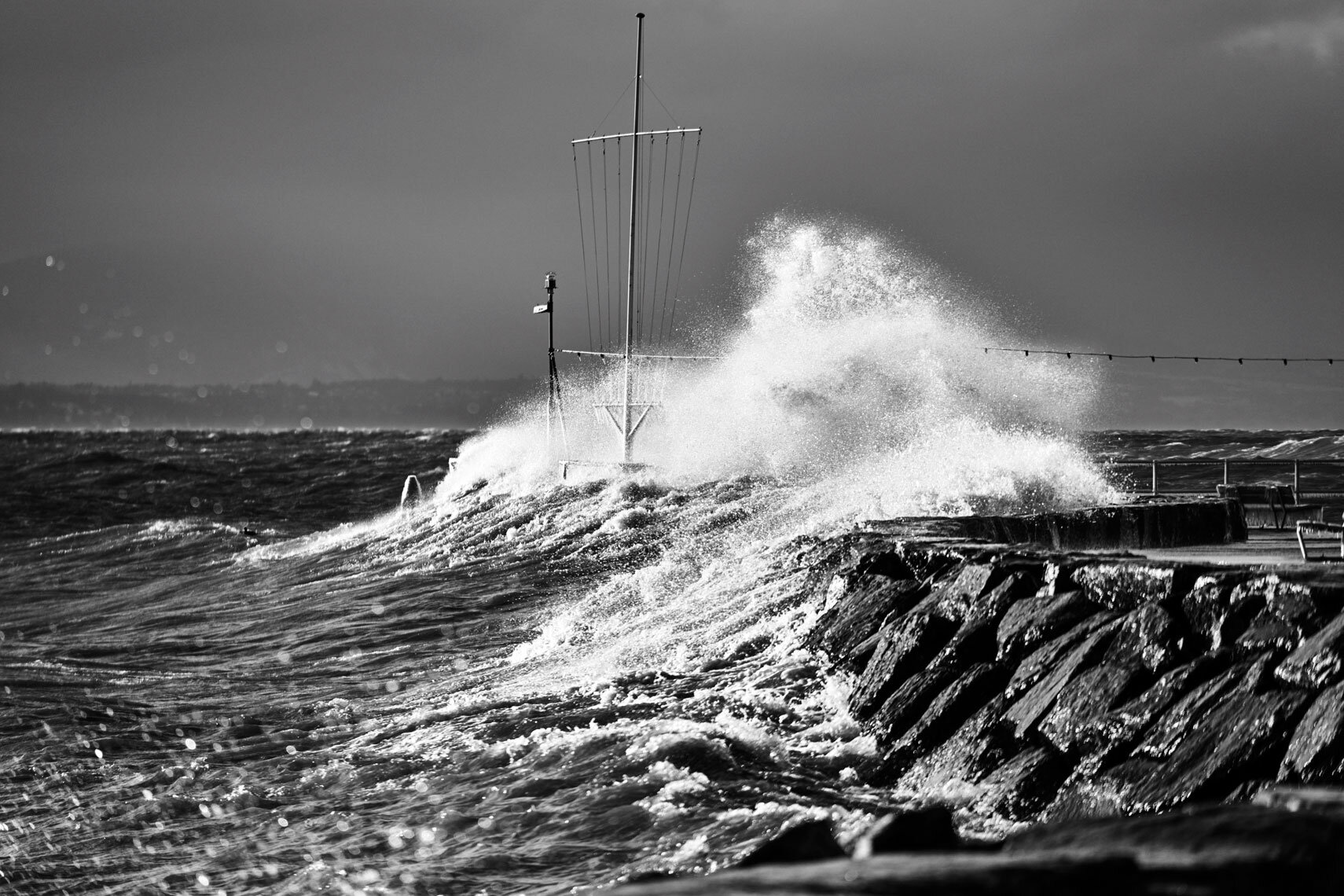
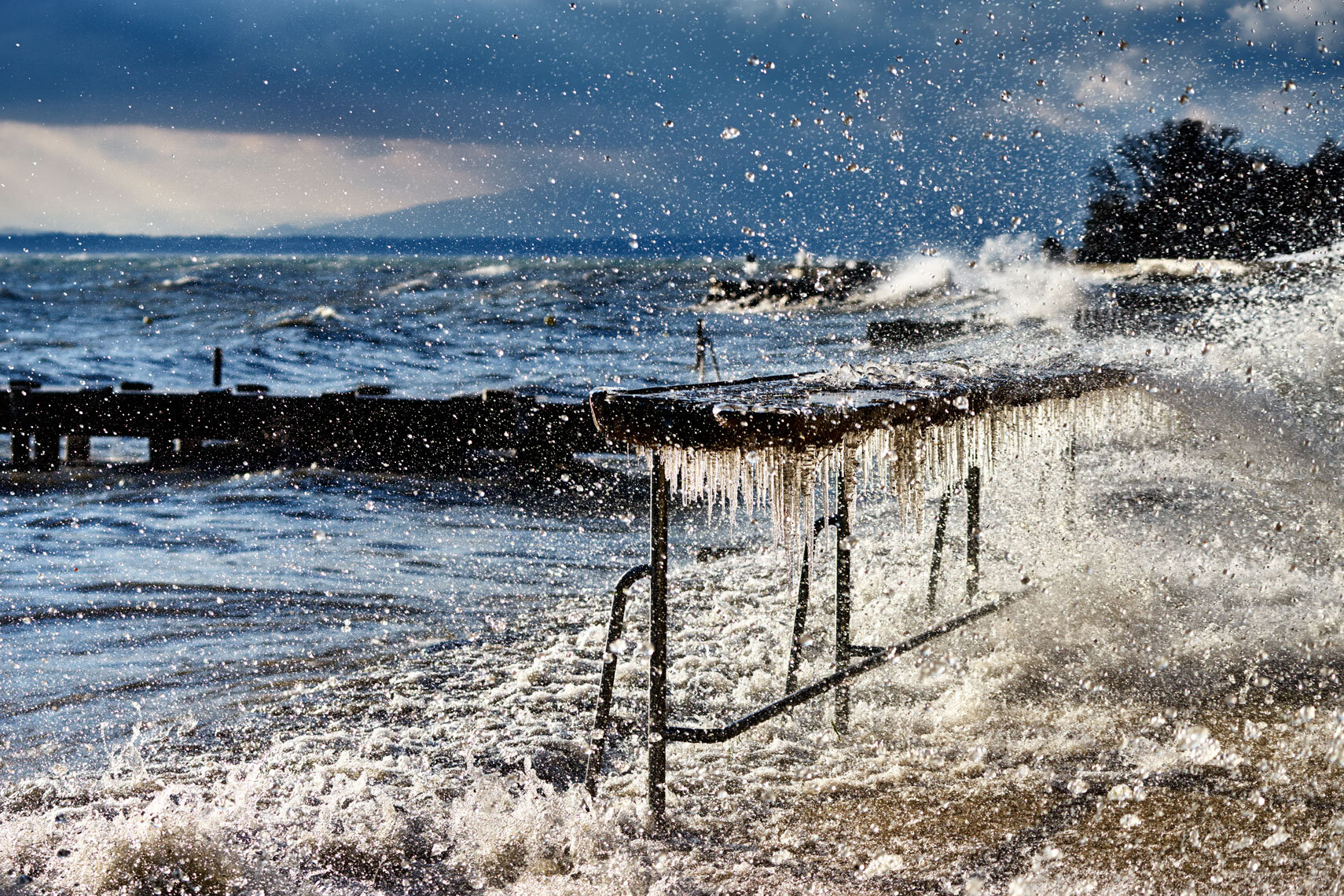

 With the most accessible ice formations being captured at a rate of 1 image every 5 minutes, there was certainly the need to look further a field and wait for the light to change. For the most part the ice was sheltered underneath a foreboding sky, with a cool blue hue attached to each scene. The odd ray of light did make an appearance however, and I made it my priority to photograph as much under that beautiful winter light. As sunset took hold, a flock of seagulls were illuminated as they picked off Crayfish that had been tossed onto the shore. It seems that breakfast, lunch and dinner for them that day was as good as it gets.
With the most accessible ice formations being captured at a rate of 1 image every 5 minutes, there was certainly the need to look further a field and wait for the light to change. For the most part the ice was sheltered underneath a foreboding sky, with a cool blue hue attached to each scene. The odd ray of light did make an appearance however, and I made it my priority to photograph as much under that beautiful winter light. As sunset took hold, a flock of seagulls were illuminated as they picked off Crayfish that had been tossed onto the shore. It seems that breakfast, lunch and dinner for them that day was as good as it gets.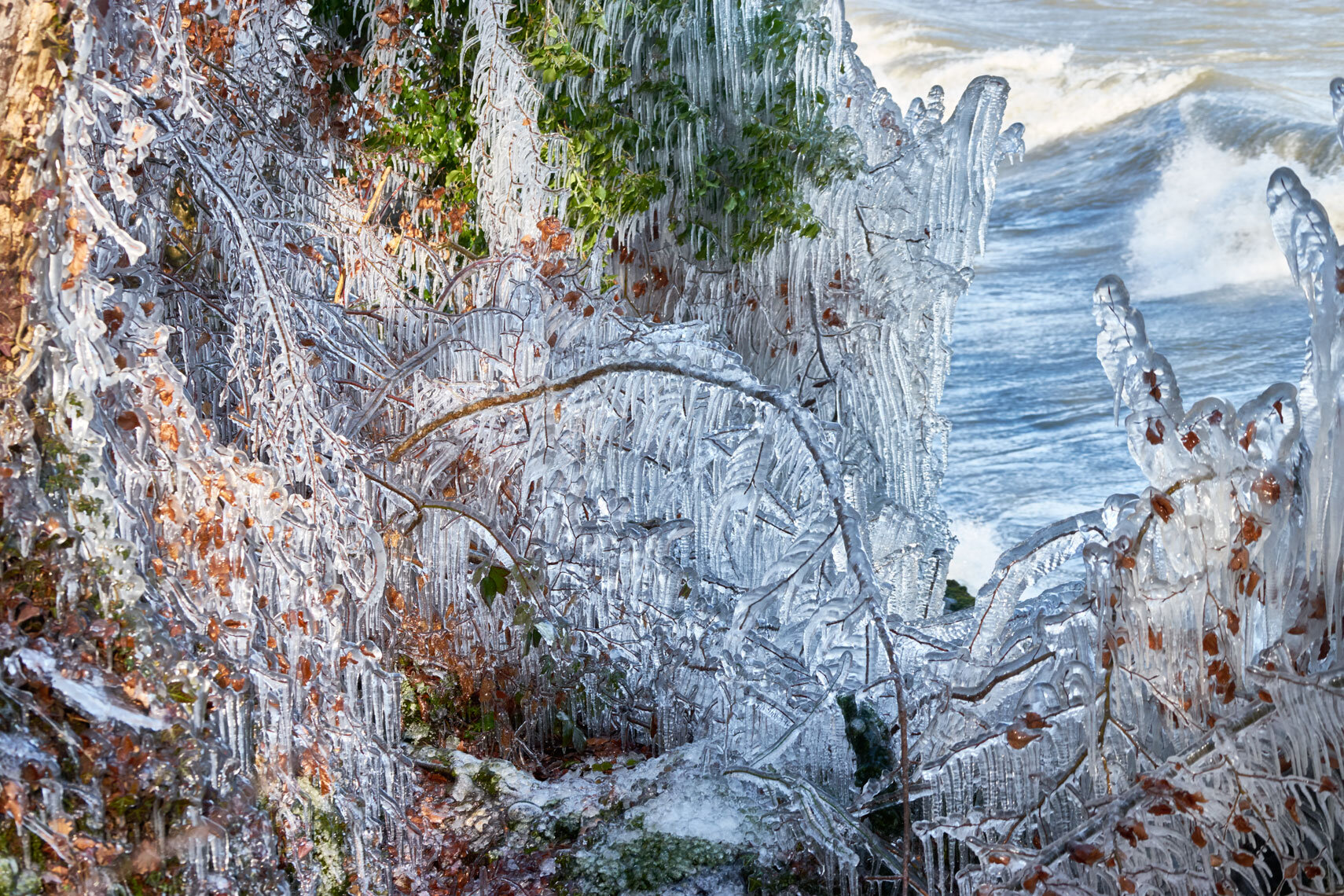
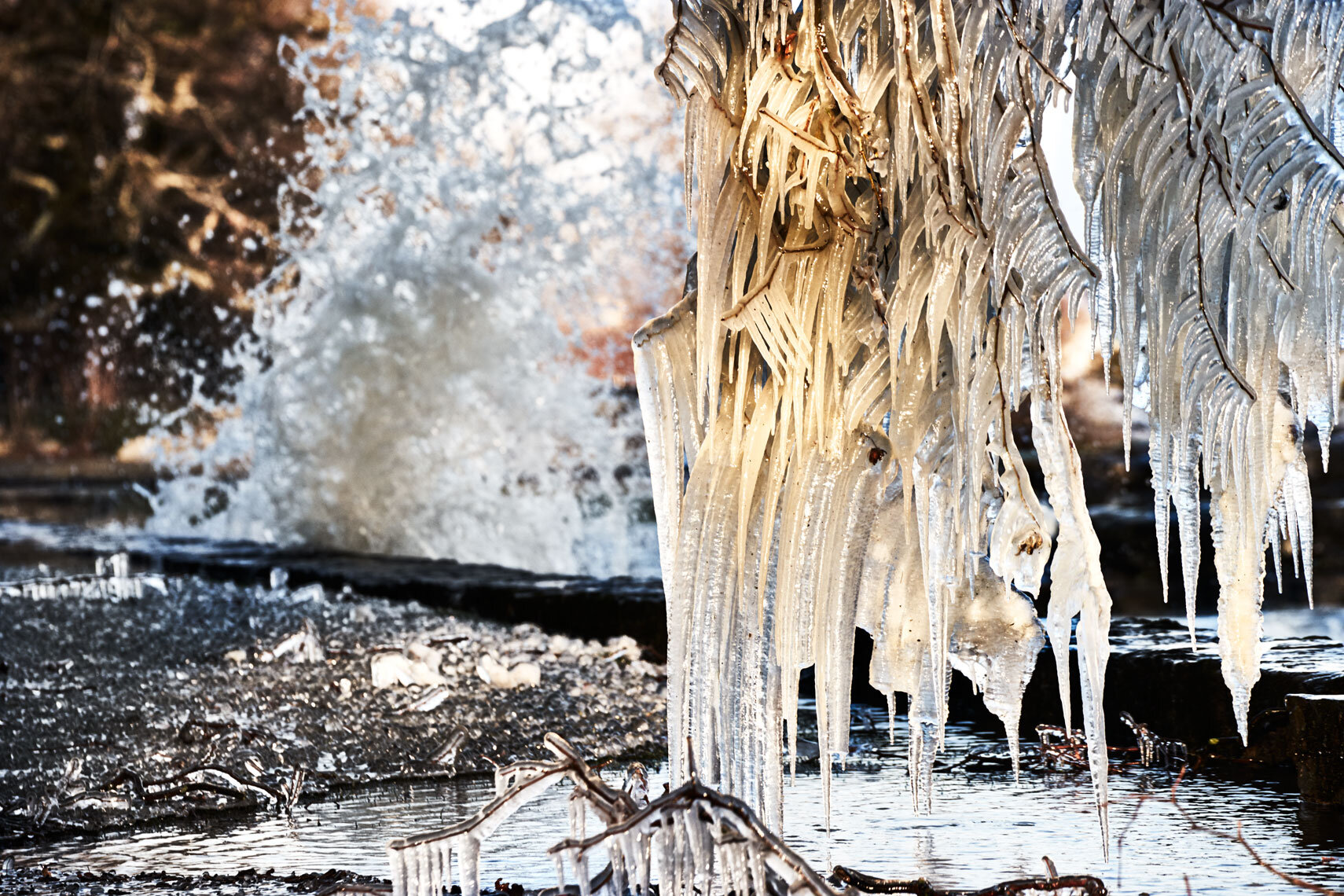





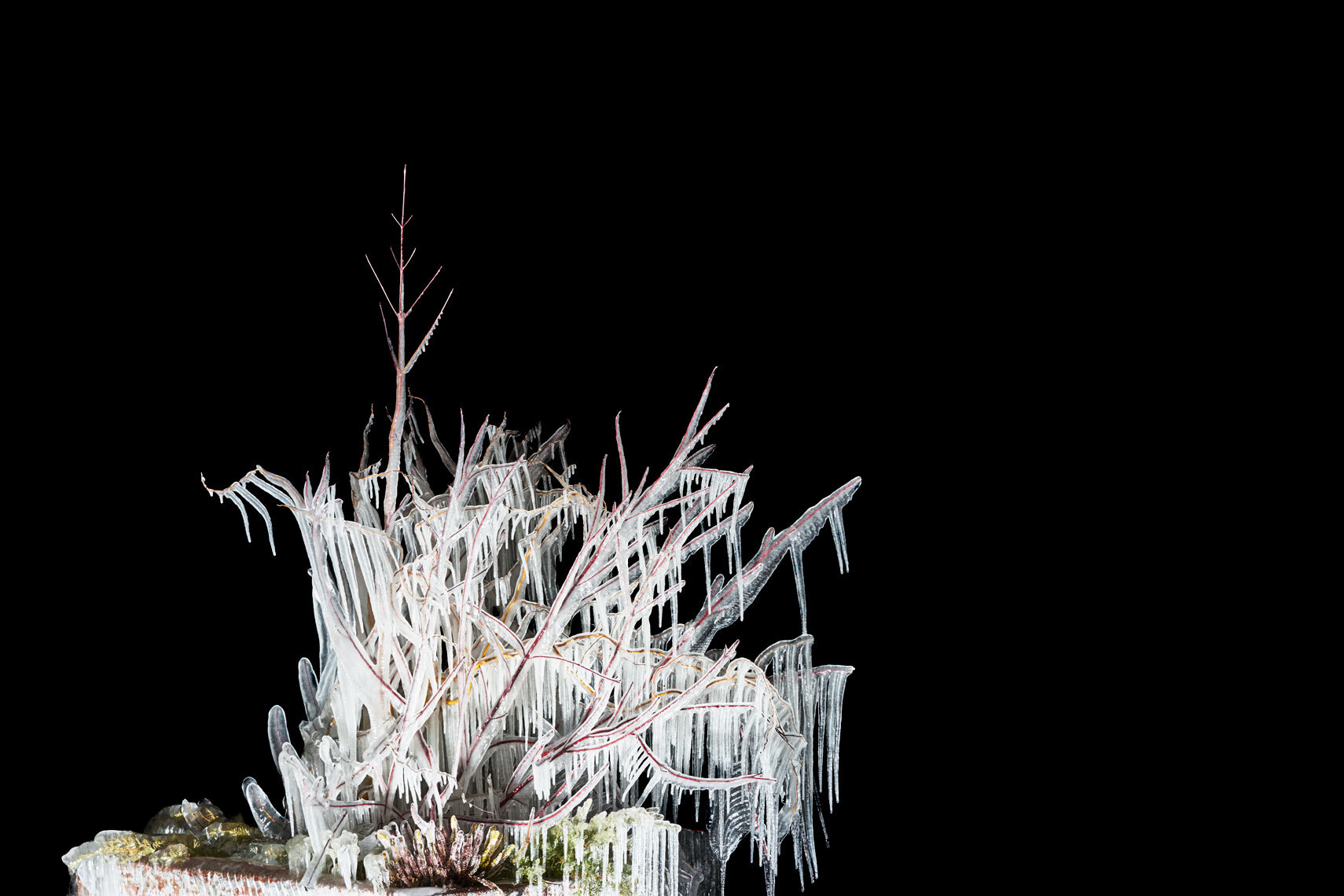
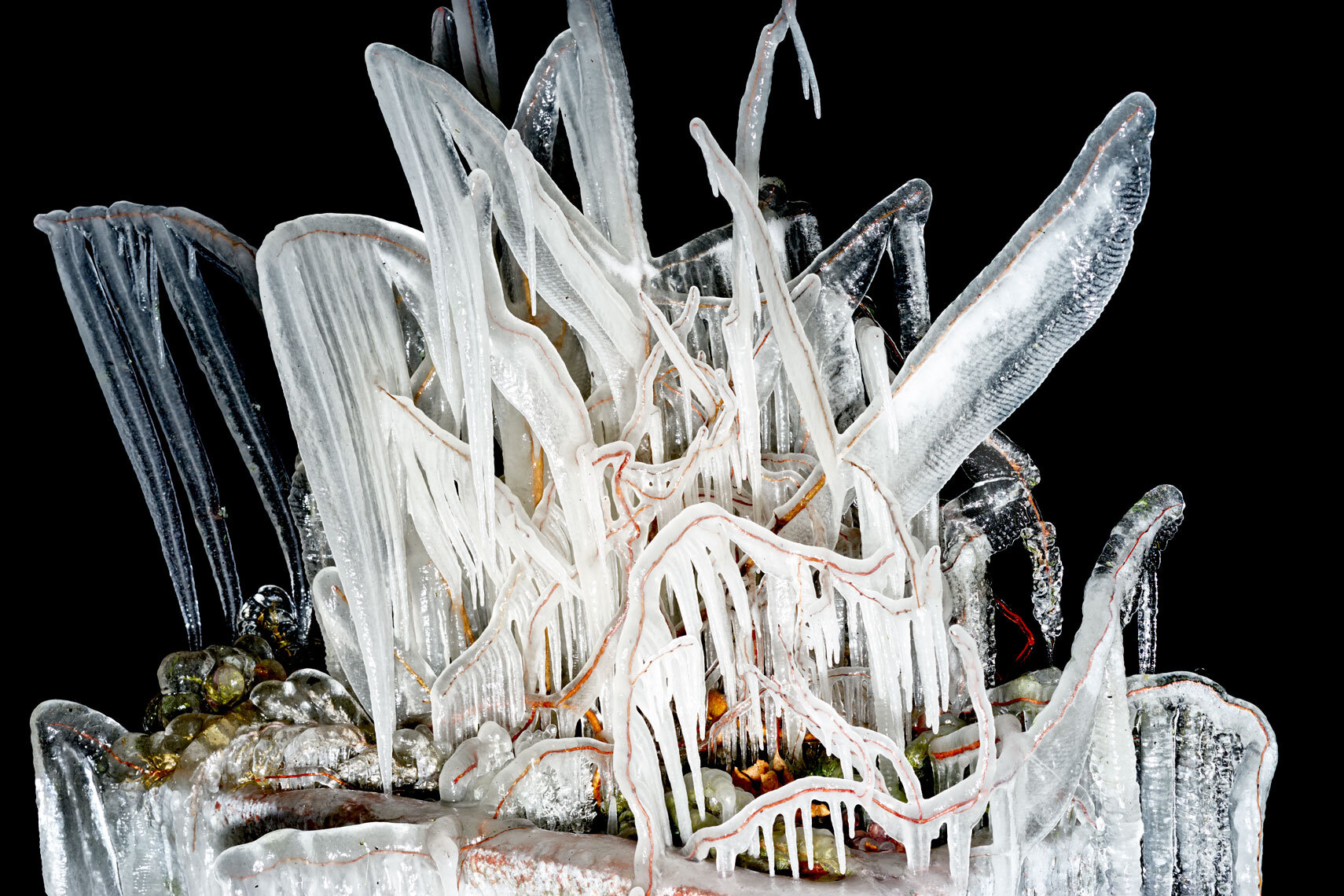
 Photographing the roadside formations at night brought a new dimension to the ice. Wanting to try and experience some more, I drove out to a nearby forest that I knew was facing the lake. Walking through it, illuminated by just my head torch, I uncovered an ice world that cracked, creaked and shifted under my every footstep. I love photographing landscapes in the evening, especially when you’re completely isolated—relying on your camera and your multiple layers of clothing, capturing the images and then heading back for a warm shower and hot drink.
Photographing the roadside formations at night brought a new dimension to the ice. Wanting to try and experience some more, I drove out to a nearby forest that I knew was facing the lake. Walking through it, illuminated by just my head torch, I uncovered an ice world that cracked, creaked and shifted under my every footstep. I love photographing landscapes in the evening, especially when you’re completely isolated—relying on your camera and your multiple layers of clothing, capturing the images and then heading back for a warm shower and hot drink.
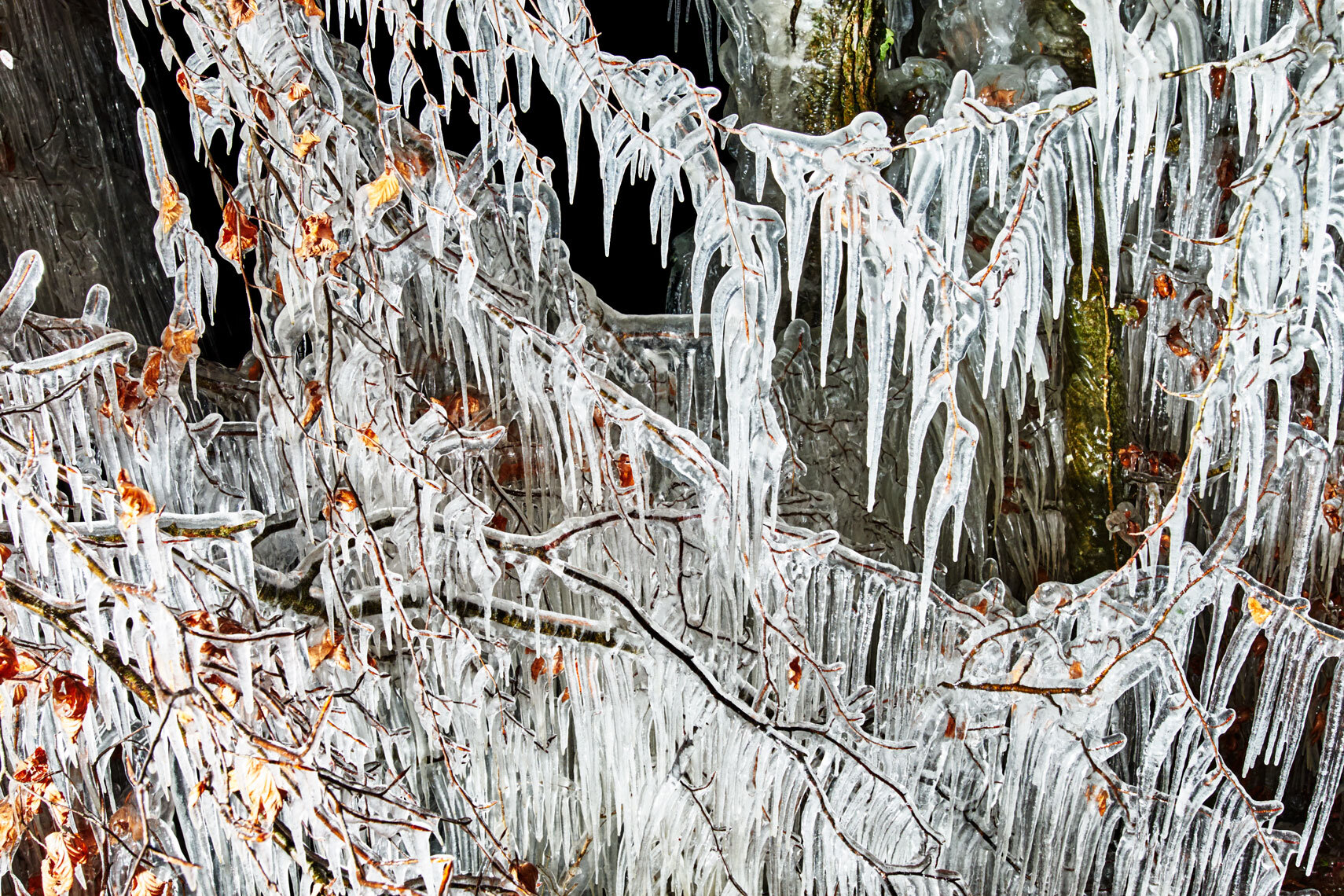 All in all, I went a little crazy photographing this ice. Editing down 1500 images to a small selection was quite the task, especially as so many had unique characteristics. It’s definitely a phenomenon that makes me fully appreciate every season. Spring, Summer, Autumn and Winter all have characteristics that I love, and I look forward to documenting each one.
All in all, I went a little crazy photographing this ice. Editing down 1500 images to a small selection was quite the task, especially as so many had unique characteristics. It’s definitely a phenomenon that makes me fully appreciate every season. Spring, Summer, Autumn and Winter all have characteristics that I love, and I look forward to documenting each one.
 The Freeride World Tour rolls into Chamonix every year to stage an event that all competitors, organiser and media look forward to. I feel like in Europe there’s no location quite like Chamonix, with imposing peaks of the Aiguille du Midi and Mont Blanc dominating the skyline above the town. Unlike other mountain resorts, these peaks jot straight up from town giving you an uninterrupted, and somewhat intimidating, view from wherever you might be in the valley.I’ve attended the Chamonix leg of the Freeride World Tour each year since 2011 and have become accustomed to the early morning gondola ride that working on the competition affords. This year I was determined to get up early to see how the sky was looking so i jumped onboard a 7am ride up to 2000m just as the morning light was starting to pop.
The Freeride World Tour rolls into Chamonix every year to stage an event that all competitors, organiser and media look forward to. I feel like in Europe there’s no location quite like Chamonix, with imposing peaks of the Aiguille du Midi and Mont Blanc dominating the skyline above the town. Unlike other mountain resorts, these peaks jot straight up from town giving you an uninterrupted, and somewhat intimidating, view from wherever you might be in the valley.I’ve attended the Chamonix leg of the Freeride World Tour each year since 2011 and have become accustomed to the early morning gondola ride that working on the competition affords. This year I was determined to get up early to see how the sky was looking so i jumped onboard a 7am ride up to 2000m just as the morning light was starting to pop. Pranplaz, situated at 1,999m, is directly opposite the Aiguille du Midi and Mont Blanc. As the sky starts to show signs of life, the sun initially illuminates the South face of the mountains where the Italian resort of Courmayeur is based. They take great pride in their location, marketing the town as, “the sunny side of Mont Blanc”.This selection of images were all captured between 7.15 and 8am as I stood and waited for the skiers and snowboarders to arrive. As they started to filter out at the top of the gondola the clouds were moving fast, washing out the skyline within about 10 minutes. it does give the sense of blink and you might miss it.
Pranplaz, situated at 1,999m, is directly opposite the Aiguille du Midi and Mont Blanc. As the sky starts to show signs of life, the sun initially illuminates the South face of the mountains where the Italian resort of Courmayeur is based. They take great pride in their location, marketing the town as, “the sunny side of Mont Blanc”.This selection of images were all captured between 7.15 and 8am as I stood and waited for the skiers and snowboarders to arrive. As they started to filter out at the top of the gondola the clouds were moving fast, washing out the skyline within about 10 minutes. it does give the sense of blink and you might miss it. There were moments during the competition where blue skies flirted with us, but generally the day was now filled with clouds. Just before 10am the light popped once more, illuminating the summit of Mont Blanc that was now being battered by strong winds.It’s a rare treat when you can capture images own your morning commute to work. Chamonix has a habit of producing the goods, leaving smiles permanently etched on the people who visit. I love the area both in the winter and summer, with some of the most visually stunning running trails to look forward to once the snow melts.
There were moments during the competition where blue skies flirted with us, but generally the day was now filled with clouds. Just before 10am the light popped once more, illuminating the summit of Mont Blanc that was now being battered by strong winds.It’s a rare treat when you can capture images own your morning commute to work. Chamonix has a habit of producing the goods, leaving smiles permanently etched on the people who visit. I love the area both in the winter and summer, with some of the most visually stunning running trails to look forward to once the snow melts.








 Today (April 16th, 2015) is a pretty miserable day. Looking out the window i’m greeted by a washed out, largely forgettable skyline (update: it actually just started raining). Living by a lake you get plenty of days like that and they have a habit of just merging into one another. Had I of woken up any time after 7, I’d have thought that the day began like that, but 5 minutes earlier, for just the briefest of moments, the sun, the clouds and the mountains all aligned to make something magic (above image). My girlfriend actually questioned why i’d taken a photo as she’d woken from her slumber just a few minutes too late.I’m not a believer in fate, but I do like the fact that the skyline produced something beautiful for a fleeting moment, exactly a year to the date that I moved into an apartment that kickstarted the Two Windows project. The project spans a year (as of today) of living in an attic of a house in the Swiss town of Nyon. The living space, although relatively large, is only graced by two windows. If I think back at all of the accommodation i’ve lived in, there’s never been somewhere with such a small amount of natural light. This would usually put me right off a property, but these old panes of glass hold something special, and it’s all down to the view.
Today (April 16th, 2015) is a pretty miserable day. Looking out the window i’m greeted by a washed out, largely forgettable skyline (update: it actually just started raining). Living by a lake you get plenty of days like that and they have a habit of just merging into one another. Had I of woken up any time after 7, I’d have thought that the day began like that, but 5 minutes earlier, for just the briefest of moments, the sun, the clouds and the mountains all aligned to make something magic (above image). My girlfriend actually questioned why i’d taken a photo as she’d woken from her slumber just a few minutes too late.I’m not a believer in fate, but I do like the fact that the skyline produced something beautiful for a fleeting moment, exactly a year to the date that I moved into an apartment that kickstarted the Two Windows project. The project spans a year (as of today) of living in an attic of a house in the Swiss town of Nyon. The living space, although relatively large, is only graced by two windows. If I think back at all of the accommodation i’ve lived in, there’s never been somewhere with such a small amount of natural light. This would usually put me right off a property, but these old panes of glass hold something special, and it’s all down to the view. The layout is pretty simple; one window faces South, and the other looks North. Having a South facing window that overlooks a lake brings about quite a bit of satisfaction, but the North facing window, that watches over our local Château is often where I can lose a lot of my time. Each view offers something quite different, complimenting each other when displayed side by side.
The layout is pretty simple; one window faces South, and the other looks North. Having a South facing window that overlooks a lake brings about quite a bit of satisfaction, but the North facing window, that watches over our local Château is often where I can lose a lot of my time. Each view offers something quite different, complimenting each other when displayed side by side. Capturing images over the length of a year is quite the feat of endurance, but thinking about it, Two windows may be one of the least labour intensive projects i’ve ever shot. It’s not everyday that you can make a set of images whilst still being in your pyjamas, eating a bowl of porridge. Simple to capture? Perhaps, but this collection of images gives me a great deal of satisfaction, effectively wrapping up a years worth of memories into one gallery.
Capturing images over the length of a year is quite the feat of endurance, but thinking about it, Two windows may be one of the least labour intensive projects i’ve ever shot. It’s not everyday that you can make a set of images whilst still being in your pyjamas, eating a bowl of porridge. Simple to capture? Perhaps, but this collection of images gives me a great deal of satisfaction, effectively wrapping up a years worth of memories into one gallery. In order to best facility the shoot and share mentality, I thought it best to build my presentation portfolio from the ground up. I, like most other people, joined the mad rush to purchase an iPad when they were initially released, standing strong on the belief that it would be the sole way to display a portfolio moving forward. Print was seeing a major decline in popularity and the allure of a producing a great looking, backlit portfolio with very little effort was just too good to refuse.
In order to best facility the shoot and share mentality, I thought it best to build my presentation portfolio from the ground up. I, like most other people, joined the mad rush to purchase an iPad when they were initially released, standing strong on the belief that it would be the sole way to display a portfolio moving forward. Print was seeing a major decline in popularity and the allure of a producing a great looking, backlit portfolio with very little effort was just too good to refuse. Luckily, times have changed. I’ve got a pretty good range of magazine subscriptions, composed of both digital and print. Some magazines, like Outside Magazine and National Geographic have really great iPad versions of their magazines offered through the Newsstand app. The problem I have with this is that when I pick up my iPad to read a magazine through the app, it’s not long before my attention has wandered and i’m back in the Mail clearing out my inbox. Print feels different though. Despite the decline in popularity of a lot of the printing outlets, some truly amazing titles are on offer at the newsagents. Ultra high quality and extremely readable titles exist (In the Uk I love
Luckily, times have changed. I’ve got a pretty good range of magazine subscriptions, composed of both digital and print. Some magazines, like Outside Magazine and National Geographic have really great iPad versions of their magazines offered through the Newsstand app. The problem I have with this is that when I pick up my iPad to read a magazine through the app, it’s not long before my attention has wandered and i’m back in the Mail clearing out my inbox. Print feels different though. Despite the decline in popularity of a lot of the printing outlets, some truly amazing titles are on offer at the newsagents. Ultra high quality and extremely readable titles exist (In the Uk I love  I see the process of making a print portfolio as being very similar to producing one of these Indy magazines – it’s a labour of love. The act of putting all of the pieces together is not an easy one. Selecting images that are strong enough to be displayed and then fit within a series, whilst maintaining a natural flow, takes time. My book is still very much in its infancy but reactions from initial meetings have been positive. Quality was paramount, with me first buying the cover of the book late last year. I was initially headed down the path of getting a linen backed portfolio, very British looking, but all this changed when I saw what the guys over at
I see the process of making a print portfolio as being very similar to producing one of these Indy magazines – it’s a labour of love. The act of putting all of the pieces together is not an easy one. Selecting images that are strong enough to be displayed and then fit within a series, whilst maintaining a natural flow, takes time. My book is still very much in its infancy but reactions from initial meetings have been positive. Quality was paramount, with me first buying the cover of the book late last year. I was initially headed down the path of getting a linen backed portfolio, very British looking, but all this changed when I saw what the guys over at  The section and printing of images has been something that has taken up a lot of my spare time as of late. I’m lucky to have been working with a great printer (
The section and printing of images has been something that has taken up a lot of my spare time as of late. I’m lucky to have been working with a great printer (